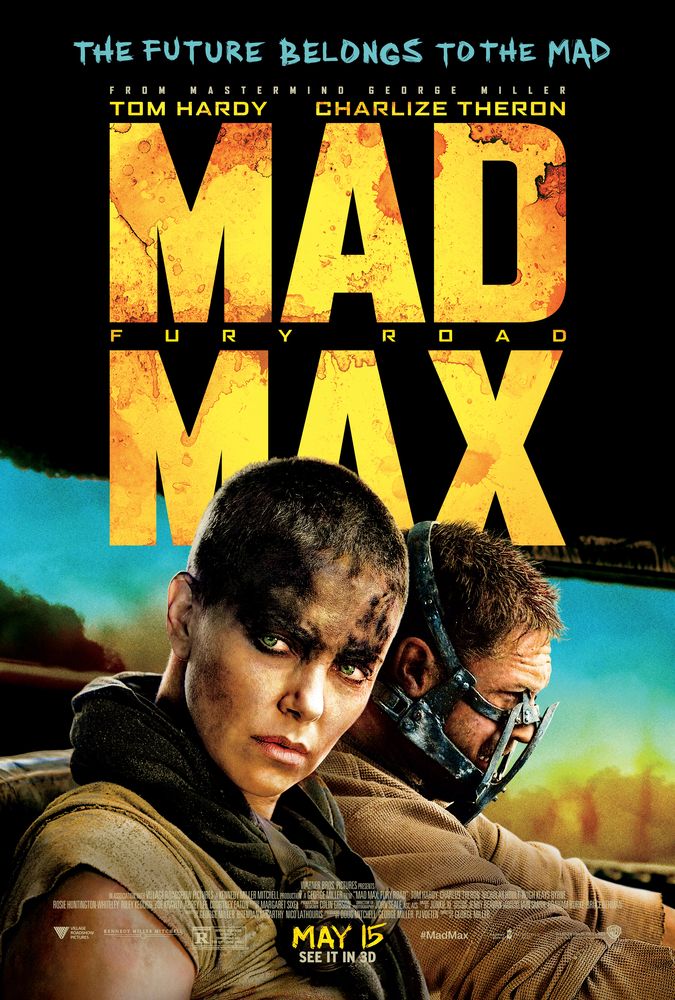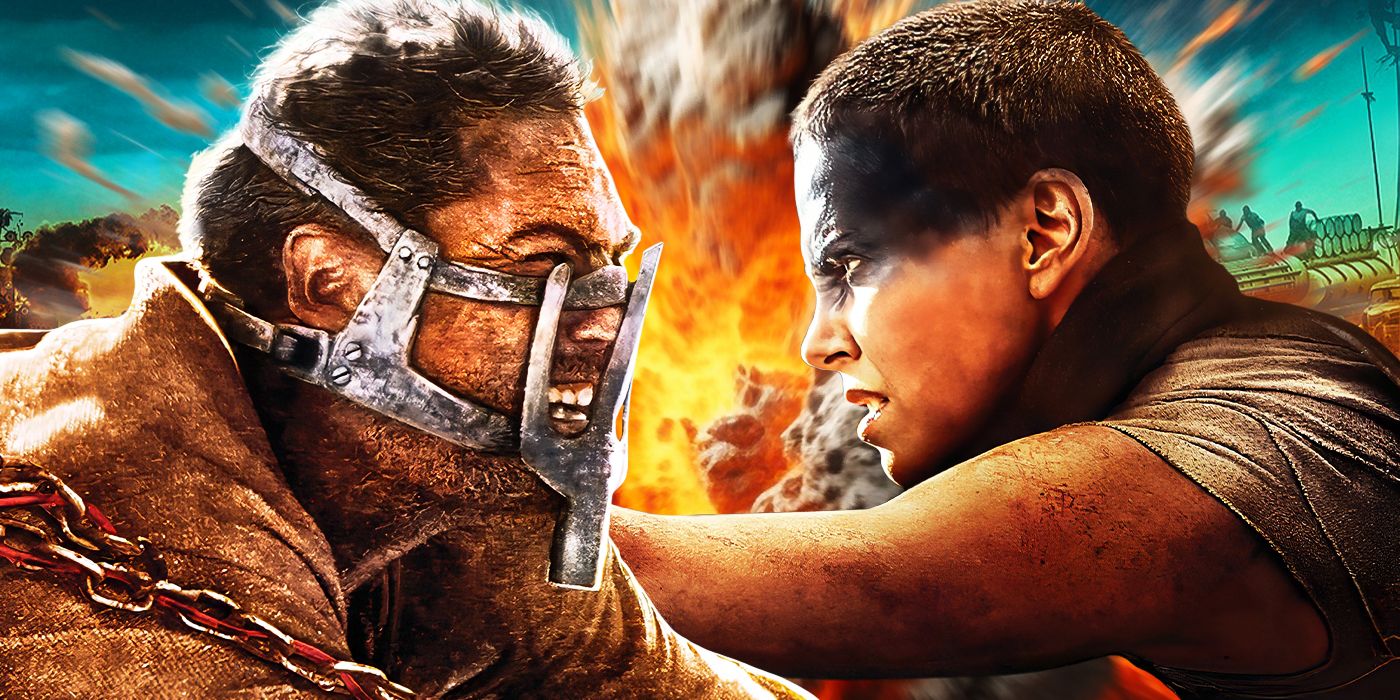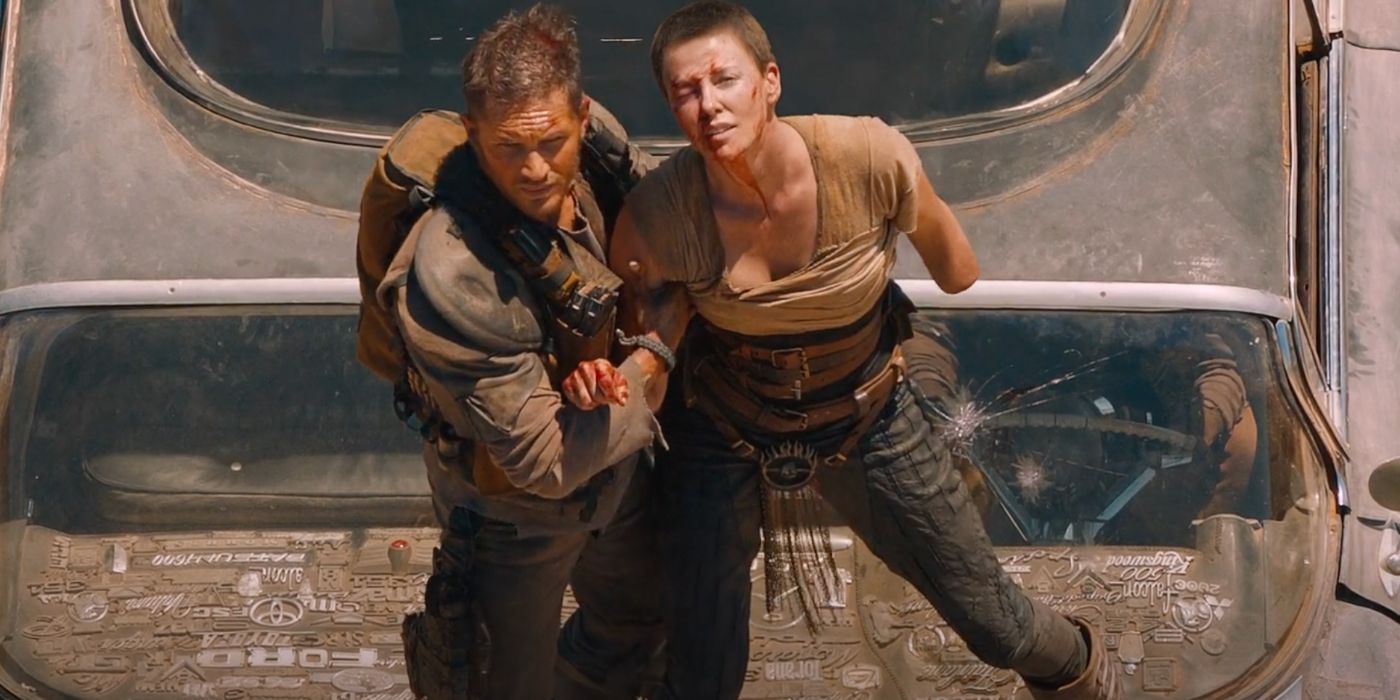As Mad Max: Fury Road turns ten, its legacy is untouchable. The film’s magic is in how perfectly its production design—on every level—supports a stellar cast, most of all its central pair, Max (Tom Hardy) and Furiosa (Charlize Theron). I count myself lucky to have been alive for the theatrical run and to have seen it multiple times in theaters. I’m blessed to know that if a sandstorm looks cool enough, feels high-stakes enough, and is projected onto an enormous screen, it can make me cry at how beautiful and awful it is. (Thanks in no small part to Junkie XL’s score). But for me, the greatest moment in the film isn’t the convoy chase or the second canyon run or any feat of action. It’s the blood transfusion scene; for in Mad Max’s brutal dystopia, exchanging names and blood is damn near a wedding.
George Miller Masters Visual Character Development in ‘Mad Max: Fury Road’
I love action because it’s primitive storytelling. There’s an economy to action, where visual and sonic aspects of the story say more than exposition or monologues. George Miller is masterful in his understanding of this. His set pieces are as much for the emotional exploration of his characters as they are for pyrotechnics. Furiosa, Max, and the “Wives” of Immortan Joe (Hugh Keayes-Burne)—Angharad (Rosie Huntington-Whiteley), Toast (Zoe Kravitz), Capable (Riley Keough), The Dag (Abbey Lee), and Cheedo (Courtney Eaton)—and even War Boy Nux (Nicholas Hoult) emotionally resonate through the screen, feeling as close as dramatically flung steering wheels and guitars in the funnel of a canyon explosion. Max is a man of few words, and neither circumstances nor constitution inspire Furiosa to small talk. The trust between them is demonstrated in motion, Max deferring to Furiosa on the grounds of her capability. Max keeps the brides safe, because while they mean nothing to him, they mean everything to her. It’s Pride & Prejudice set in a desert hellscape.
Max demonstrates his faith in Furiosa repeatedly as the story unfolds. He lets her use him as a sniper tripod, and even accepts her command of, “Don’t breathe.” Furiosa trusts Max to follow her lead and stick to her plans. This is, of course, born out of necessity. But soon, she trusts him alone with the Wives and with the start code for The Rig.
Tom Hardy and Charlize Theron’s Chemistry Evolves in ‘Mad Max: Fury Road’
This trust steps out of necessity and into mutual respect after they find what is left of the Vuvalini. Furiosa learns that “The Green Place” has been destroyed. In one of the franchise’s most beautifully composed scenes, Furiosa collapses from grief on the swirling sands of the dunes. The next time we see her, she is wrapped in a blanket, hugging herself, in a level of ease and vulnerability you’re unlikely to have ever imagined Furiosa in. She goes to Max with a plan to move forward that may as well be a proposal: “If we leave the Rig here and load the motorcycles up with as much as we can, we can maybe ride for 160 days… One of those bikes is yours. Fully loaded.”
Leaving the Rig behind marks the last of Furiosa’s submission to Immortan Joe. Whatever is on the other side of the desert, it’s a new chapter for Furiosa, and she even asks Max to join her. Max tries to accept the bike and go his own way, telling a clearly disappointed Furiosa, stating: “Hope is a mistake.” But Glory—a child from Max’s past that now haunts him as part instinct, part angel on his shoulder—doesn’t let him. He returns with the even wilder plan to go back the way they came and take the Citadel for themselves. “At least that way, together, we might be able to come across some kind of redemption.” Max offers his hand, and Furiosa takes it. It’s a non-violent, familiar touch that so far Furiosa has only displayed with her remaining clan. It’s the kind of touch Max has offered no one else.
In the chaos back through the canyon, Furiosa is extremely wounded—blood is getting into her lungs, and her extensive injuries are functionally suffocating her. She whispers, “Get them home.” She trusts Max to carry through with the plan, protect the Wives, and offer a kinder future to everyone under the now-dead Imperator’s thumb. Furiosa has always been willing to die for this plan, but Max isn’t willing to let her. He tends to Furiosa’s injuries with unexpected tenderness, whispering her through it. When puncturing her further to drain her lungs leaves her exsanguinated, Max unravels the tubes that once funneled his blood to Nux and gives his blood to Furiosa. Finally, he gives Furiosa his name, “Max. My name is Max.”
‘Mad Max: Fury Road’ Finds Hope in Devotion
No scene in any romantic drama or rom-com since has come close to the feeling I get from Max keeping one hand always on Furiosa to comfort or cradle her as he gives up his blood to save her life. Max starts the film captured, serving as a blood bag to Nux, but now gives his blood freely to save Furiosa’s life. This moment turns the commodification of bodies in Mad Max into a consensual and loving act—a healing act.
In the end, Max does make his own way, disappearing into the crowd as he and Furiosa share a meaningful moment of eye contact. It’s not a traditional romance by any means, but Max and Furiosa restore each other’s humanity. Their chemistry—in battle, as haunted dual protagonists—turns a path of destruction into a road of hope. If there is a story for Max or Furiosa after the events of Mad Max: Fury Road, I know in my heart it includes each other.

- Release Date
-
May 13, 2015
- Runtime
-
120 minutes
- Director
-
George Miller
- Writers
-
George Miller, Brendan McCarthy, Nick Lathouris, Byron Kennedy








